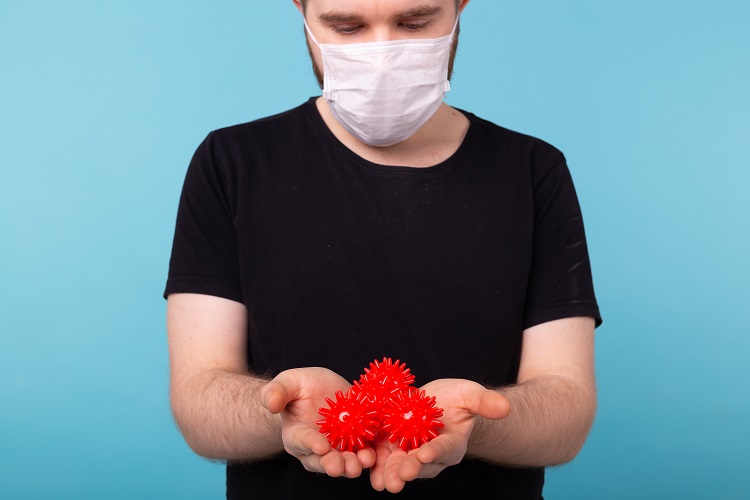Living with HIV is no longer what it used to be decades ago. Thanks to advancements in medicine, awareness, and support systems, people with HIV can lead fulfilling, vibrant lives. But beyond medications and regular check-ups, lifestyle choices play a huge role in maintaining both physical and emotional well-being. One of the most powerful tools for healthy living with HIV is the combination of Exercise And Positivity. Together, they create a foundation for strength, resilience, and confidence.
This guide explores how movement, mindset, and supportive practices empower people with HIV to thrive, not just survive. By humanizing this content and adding practical, realistic advice, we’ll show how exercise and positivity are not luxuries—they’re essential parts of everyday life for anyone navigating HIV.
Understanding Healthy Living with HIV
Healthy living with HIV goes far beyond simply taking antiretroviral therapy (ART). While ART keeps the virus under control, lifestyle factors determine how well your body and mind adapt. Living with HIV means prioritizing your immune system, mental health, and overall wellness.
When we humanize this content, it’s important to acknowledge that HIV comes with emotional challenges too—stigma, self-doubt, and fear. But health is not only about fighting the virus; it’s about reclaiming energy, joy, and self-worth. By adopting healthy routines that include physical activity, balanced nutrition, and a positive outlook, people living with HIV can build strong bodies and resilient minds.
The Role of Exercise in HIV Health
Exercise is more than just about looking fit; for people living with HIV, it’s about building immunity, reducing stress, and improving quality of life. Studies show that regular movement helps regulate weight, lowers the risk of cardiovascular disease, and improves mental health.
Physical activity stimulates the release of endorphins, which counteract feelings of anxiety and depression. Many people with HIV struggle with fatigue, but regular, moderate exercise can actually boost long-term energy levels. Even light activities like walking, yoga, or stretching can make a profound difference in daily health.
Exercise Matters for the Immune System
The immune system is at the heart of healthy living with HIV. Since the virus targets immune cells, protecting and strengthening this system becomes critical. Exercise has been proven to enhance immune response by reducing chronic inflammation, improving circulation, and supporting overall organ function.
Strength training, for example, helps maintain muscle mass that HIV-related conditions or medications might affect. Aerobic exercises like swimming or cycling improve cardiovascular health, which is especially important because people with HIV may face higher risks of heart disease. When combined, these forms of exercise provide a balanced foundation for long-term wellness.
Types of Exercise Beneficial for People Living with HIV
Not every workout has to be intense or high-impact. People living with HIV benefit most from personalized, sustainable exercise routines that fit their body and lifestyle. Some recommended activities include:
- Walking or Jogging: Low-impact ways to improve cardiovascular health.
- Yoga and Stretching: Excellent for reducing stress, increasing flexibility, and improving mindfulness.
- Strength Training: Helps preserve bone density and muscle mass.
- Swimming or Cycling: Joint-friendly aerobic exercises that boost stamina.
The key is consistency over intensity. Doing a little bit every day is far more effective than pushing too hard and risking burnout or injury.
Mental Health Benefits of Exercise
Beyond physical strength, exercise is a mental health booster. People with HIV often face unique emotional challenges, from stigma in relationships to anxiety about their health future. Movement becomes an outlet—a way to channel stress into strength.
Exercise reduces cortisol, the stress hormone, and increases endorphins, which create feelings of happiness and positivity. Group workouts, like dance or aerobics classes, also provide social connection, helping people feel less isolated. By humanizing this content, we see exercise not only as a fitness tool but also as a path toward emotional healing and belonging.
The Power of Positivity in Living with HIV
While exercise strengthens the body, positivity strengthens the mind and spirit. Adopting a positive mindset doesn’t mean ignoring challenges. Instead, it means choosing to focus on resilience, gratitude, and growth.
Living with HIV can be overwhelming, especially in the early stages of diagnosis. Positivity provides a coping mechanism, helping individuals accept their condition while still striving for meaningful goals. Whether through affirmations, journaling, or connecting with supportive communities, positivity allows people to find light in the journey.
How Positivity Affects Physical Health
Positivity doesn’t just improve mood; it directly impacts physical health. Research shows that people with optimistic outlooks recover faster from illnesses, respond better to treatments, and enjoy longer lifespans. For those living with HIV, positivity works hand-in-hand with ART and exercise to build overall resilience.
Stress and negative thinking can weaken the immune system, making the body more vulnerable to infections. On the other hand, positivity reduces stress hormones and promotes relaxation. By integrating positivity into daily life, people living with HIV actively support their body’s healing process.
Daily Habits That Cultivate Positivity
Creating a positive mindset is not about pretending everything is perfect; it’s about developing habits that shift focus toward growth and self-acceptance. Practical steps include:
- Practicing Gratitude: Writing down daily things to be thankful for.
- Mindfulness and Meditation: Staying present and reducing overthinking.
- Surrounding Yourself with Support: Building a circle of uplifting friends and communities.
- Limiting Negative Influences: Avoiding toxic environments or conversations.
When these habits are combined with exercise, they reinforce both physical and emotional health, creating a cycle of empowerment.
Combining Exercise and Positivity: A Lifestyle Approach
Exercise and positivity are not separate—they amplify each other. When you work out, you feel stronger, and positivity becomes easier to maintain. Likewise, when your mindset is positive, you’re more motivated to stay active.
For people living with HIV, this combination builds resilience in daily life. Imagine starting the day with a light workout followed by five minutes of gratitude journaling. This simple routine sets the tone for strength, confidence, and optimism. Over time, such habits become natural, making HIV management less about struggle and more about empowerment.
Overcoming Barriers to Healthy Living with HIV
Of course, challenges exist. Fatigue, medication side effects, and emotional struggles can sometimes make exercise or positivity feel impossible. Humanizing this content means acknowledging these realities rather than sugarcoating them.
The key is flexibility and self-compassion. If you’re too tired for a workout, take a gentle walk instead of skipping movement entirely. If negative thoughts arise, talk with a counselor or support group instead of suppressing feelings. Overcoming barriers is not about perfection—it’s about persistence and adapting routines to your needs.
Nutrition: Supporting Exercise and Positivity
Healthy eating complements both exercise and positivity. A nutrient-rich diet supports immune health, stabilizes energy, and improves mood. For people living with HIV, focusing on whole foods like fruits, vegetables, lean proteins, and healthy fats is especially important.
Certain foods, like leafy greens and omega-3 rich fish, are known to boost brain function and improve emotional stability. Drinking enough water and avoiding excessive alcohol or processed foods further ensures that the body and mind are fueled for resilience. Together, exercise, positivity, and good nutrition create the ultimate foundation for healthy living with HIV.
Building Support Systems for Long-Term Success
No one should face HIV alone. Support systems—whether family, friends, or specialized communities—make it easier to stay motivated with exercise and positivity. Many HIV-positive individuals find encouragement in online forums, local fitness groups, or wellness workshops tailored to their needs.
Support not only provides accountability but also reduces feelings of isolation. Talking openly about struggles and achievements allows individuals to stay grounded and continue their journey with confidence. Humanizing this content highlights the reality that support is not weakness; it is strength.
Practical Tips to Start Your Journey
If you’re ready to embrace healthy living with HIV through exercise and positivity, here are some practical tips:
- Begin with short, consistent workouts and build gradually.
- Pair exercise with enjoyable music to keep motivation high.
- Keep a positivity journal to track progress and gratitude.
- Connect with HIV support groups to share experiences and encouragement.
- Celebrate small victories, whether it’s walking farther or feeling calmer.
Consistency is key. By starting small and staying committed, these practices eventually become second nature.
Conclusion: Thriving with HIV Through Strength and Optimism
Healthy Living With HIV is not just about managing a condition—it’s about living fully, with strength and joy. Exercise strengthens the body, while positivity uplifts the spirit. Together, they form a powerful approach that allows individuals to thrive beyond limitations.
When we humanize this content, we see the real message: HIV doesn’t define you. Your choices, resilience, and outlook shape your journey. By embracing exercise, positivity, and support, you create a life filled with purpose, health, and happiness.



